https://egyptianstreets.com/2020/01/27/islam-meets-ancient-egypt-the-mosque-located-inside-luxors-iconic-temple/
Islam Meets Ancient Egypt: The Mosque Located Inside Luxor's Iconic Temple
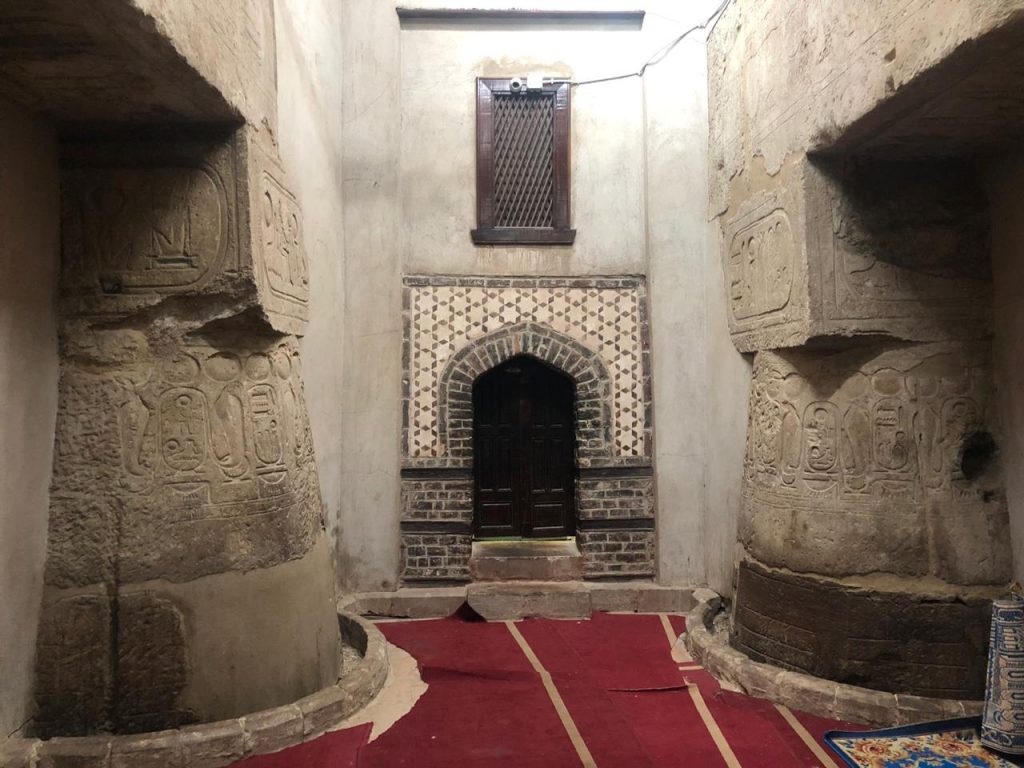
When visiting Luxor, the average traveler is spoiled for choice. However, one attractive and evident site to visit is none other than Luxor temple.
The icon of the Upper Egyptian city, arguably one of Egypt's oldest towns on which the modern-day Luxor is built on, is the temple.
An ancient structure
In truth, the 'temple' is the wrong title for the impressive archaeological giant as it comprises of several temples and archeological features built by different pharaohs in the New Kingdom (1550 – 1069 BC).
Two kings essentially build the temple, Ramses II and Amenhotep III (the grand-father of Tutankhamun) with the boy king himself having commissioned features of the Luxor site, including the fourteen colossal columns. There is also a small worshiping space – a chapel dedicated to the goddess Mut – inside the enclosure.

The art style of the temple can be difficult to date for the average tourist, but the New Kingdom influences of the human figures are clear: smooth, slender figures, fluid movement and flowing clothing are some of this period's typical characteristics, distinguishing itself from the older, more 'rigid' form of Egypt's Old Kingdom. Finally, deep in the shrine and in the back of the temple are the clear markings of the Ptolemaic period, as they are 'fuller figures with softer facial features and alternative fashion.
Although it has surviving today for more than, 3,000 years, the temple was eventually reused in the roman times as an imperial cult space. Then, a Christian basilica was built in the first court, in the northeast corner of the temple. One can still distinguish some remaining paintings today.
A religious establishment, still in use
One most definite surprising feature of the temple? The Abu Haggag mosque which has been active since the Fatimid period (11th century).
Inside the temple, the mosque can be spotted at an elevation, when the visitor goes in and looks up, to the left. There is no entry point to the mosque from the visitor's standing level.

However, upon exiting, one merely needs to walk five minutes into the main road (as if making way to the Luxor corniche) and the stairway entrance to the mosque is located at the very end of a long passage way flanked by sparse, and new, rows of wooden benches.
The mosque is still used today – however, barely any tourists can be spotted there, with even less at night. Women, needing to abide by the religious norms of a mosque, are given headscarves when perusing the perimeters of the Islamic monument.
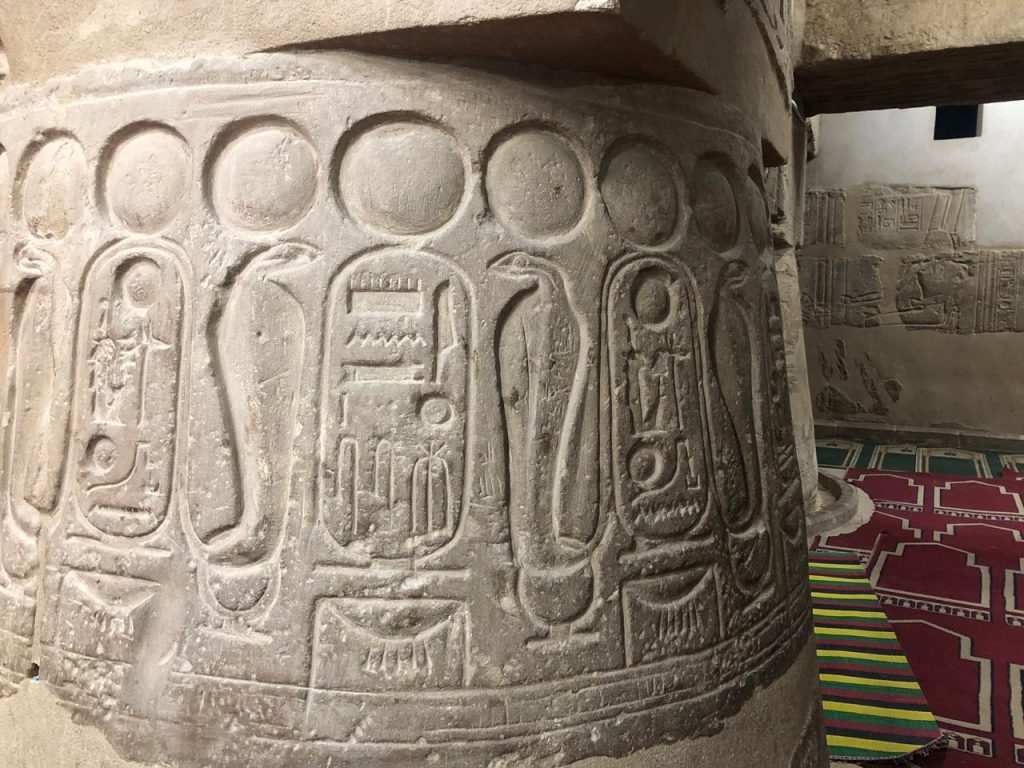
It seems almost unfathomable to imagine a mosque inside such an important and vastly visited site such as Luxor temple. Moreover, as women grasp the hands of their kids to pray and men touch the saints' icons inside the heart of the mosque, it is more than obvious that those praying have grown accustomed to the mishmash of influences, as the mosque is actively used today.
Most likely, one of the mosque's keepers will give a little tour that would require a tip.
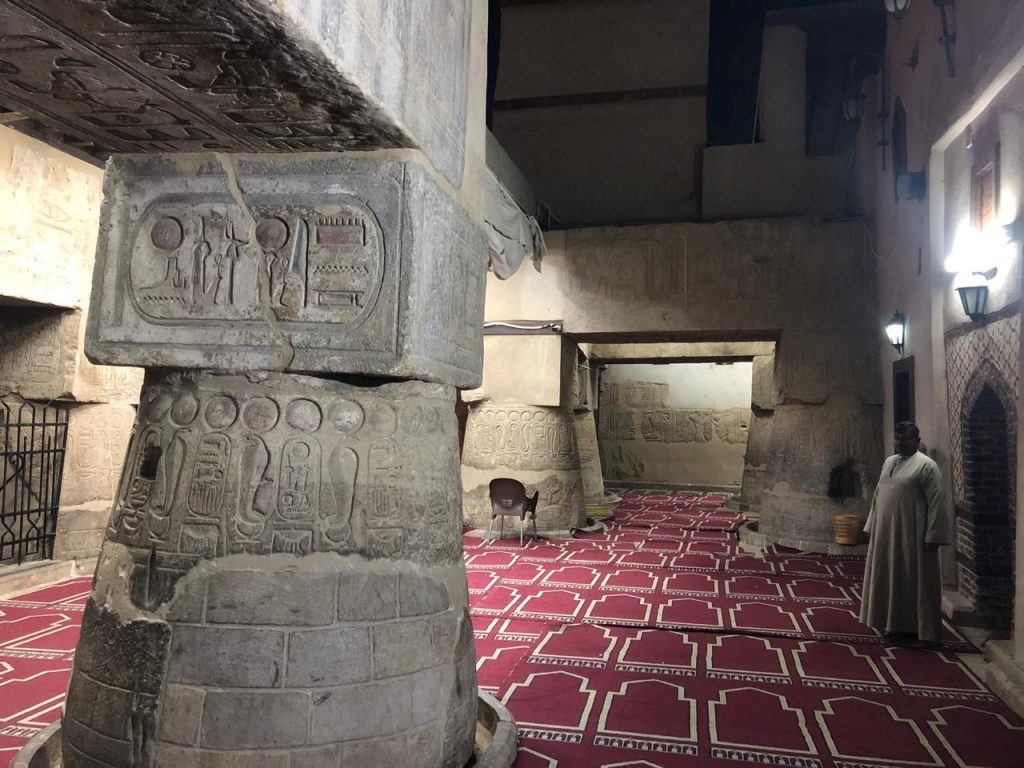
A perpetually puzzling tour
The mosque is constructed just like any typical house of worship for Muslims: it has minarets, prayer mats, a mihrab – facing the direction of Mecca- as well as a minbar from which an imam sits to have his sermons. However, one very interesting aspect of these features is that one of the ancient Egyptian columns was actually carved out to form the minbar. The defacement, to then give the mosque its Islamic features, is thus palpable.
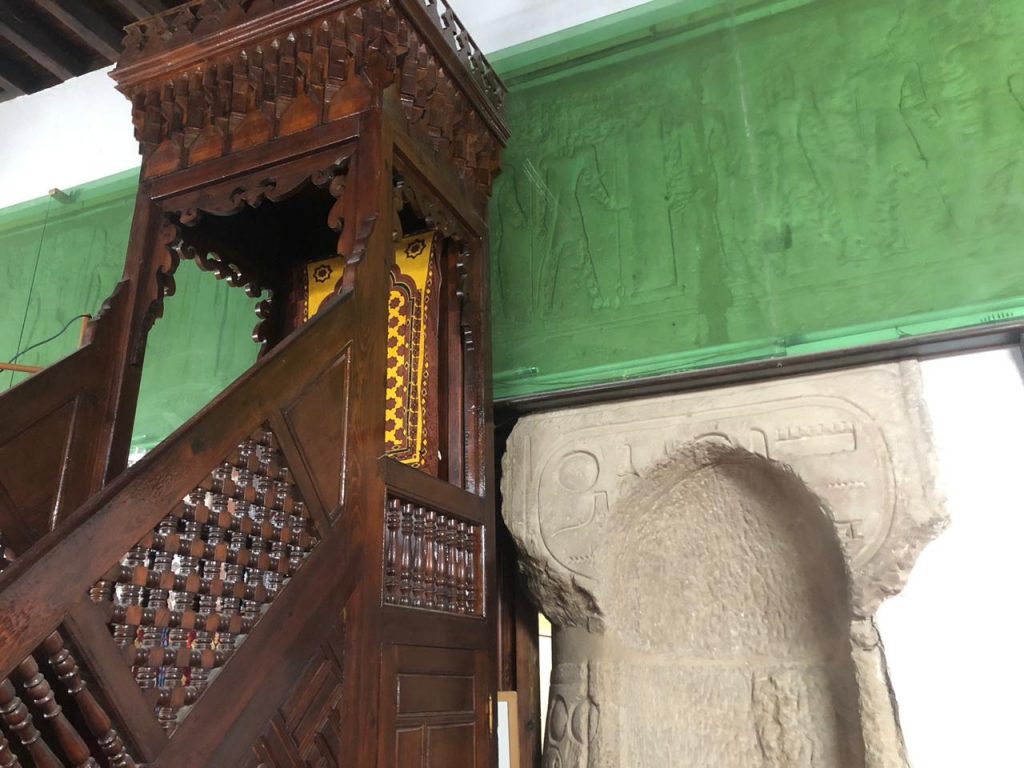
Overall, the mosque is not the most well-kept, with dust gathering in many corners which are replete with broken chairs or pile of discarded objects. There are also sections to the mosque which mysteriously seem more in use than others.
The original door of the mosque, in wood, is on the other side of the contemporary entrance to the mosque. It has been well-kept although most definitely not in use. The door contextualizes the elevation of the mosque and how deep excavations must have ran prior to unearthing the Luxor temple from the mounds of rubble and rubbish the temple must have found itself in by the time Gaston Maspero started excavating it in the 19th century.
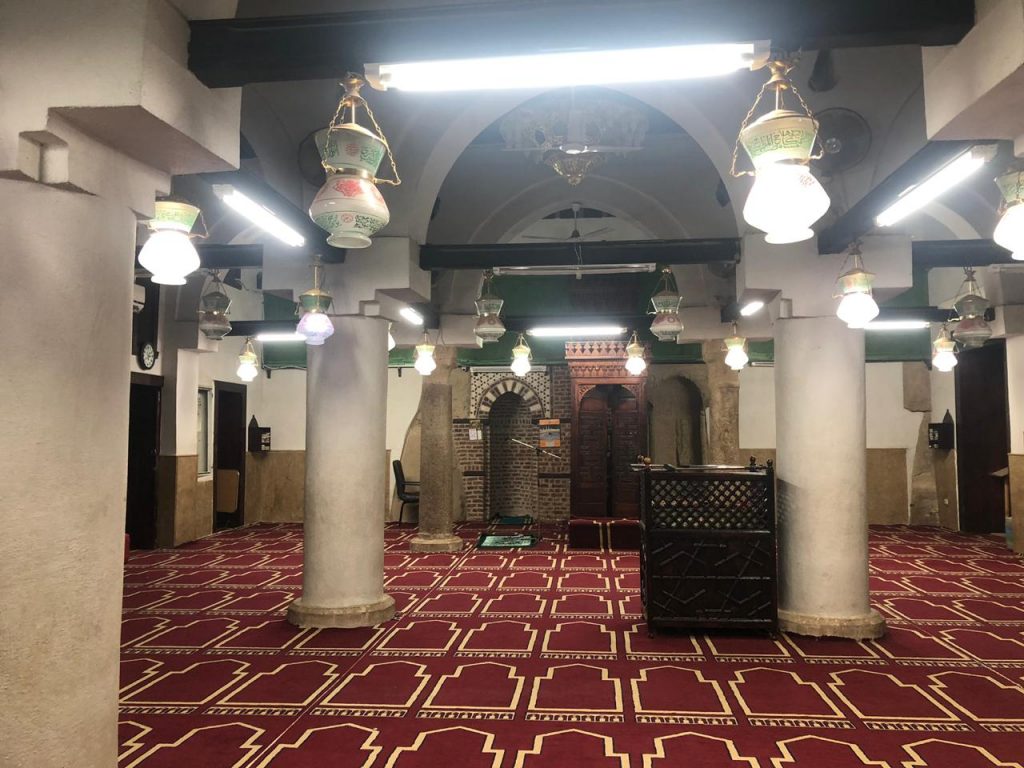
Moreover, there is a small 'shrine' section reserved for the family of Abu Haggag who have been buried in the mosque as saints, inside locked up enclosures and glass cases, which then makes the mosque an obvious pilgrimage site for many hoping to receive blessings.
The mosque actually derives its name from the figure of Damascus-born Sheikh Yusuf Abu el Haggag who is considered a a holy man by Upper Egyptians. Not much is known about the figure but locals say that he was a descendant of the prophet Mohamed which then makes him one of the 'Honourables'.
The wall behind the enclosure in which his body lies is adorned with hieroglyphs.
Layers of culture and influences
One must take a couple of minutes to fully grasp what this particular site means. Luxor temple, much like most ancient Theban structures, has been inscribed in the World Heritage UNESCO list since 1979.
It is a famous and beloved destination in Upper Egypt, visited by millions each year for the wondrous heritage it has preserved. It would thus make sense that much-frequented site would be turned into a garrison, then into a church, then having a mosque built on top of it.

In a way, the architectural and cultural evolution of the temple naturally traces over Egypt's overall history; it also mirrors the juxtaposition of cultural influences that Egyptians live by today.
Like the 'Complex of Religions' district in Cairo (Mogama' El Adyan in Fustat), where the Amr Ibn Al-Aas Mosque, various churches, including the Hanging church, and the Ben Ezra synagogue clearly highlight Egypt's cultural legacy, this specific zone of makes for what Egypt is today: a mixture of ancient, Christian, Islamic and modern.
Featured image courtesy of Amina Zainedine.
--
Sent from my Linux system.
No comments:
Post a Comment